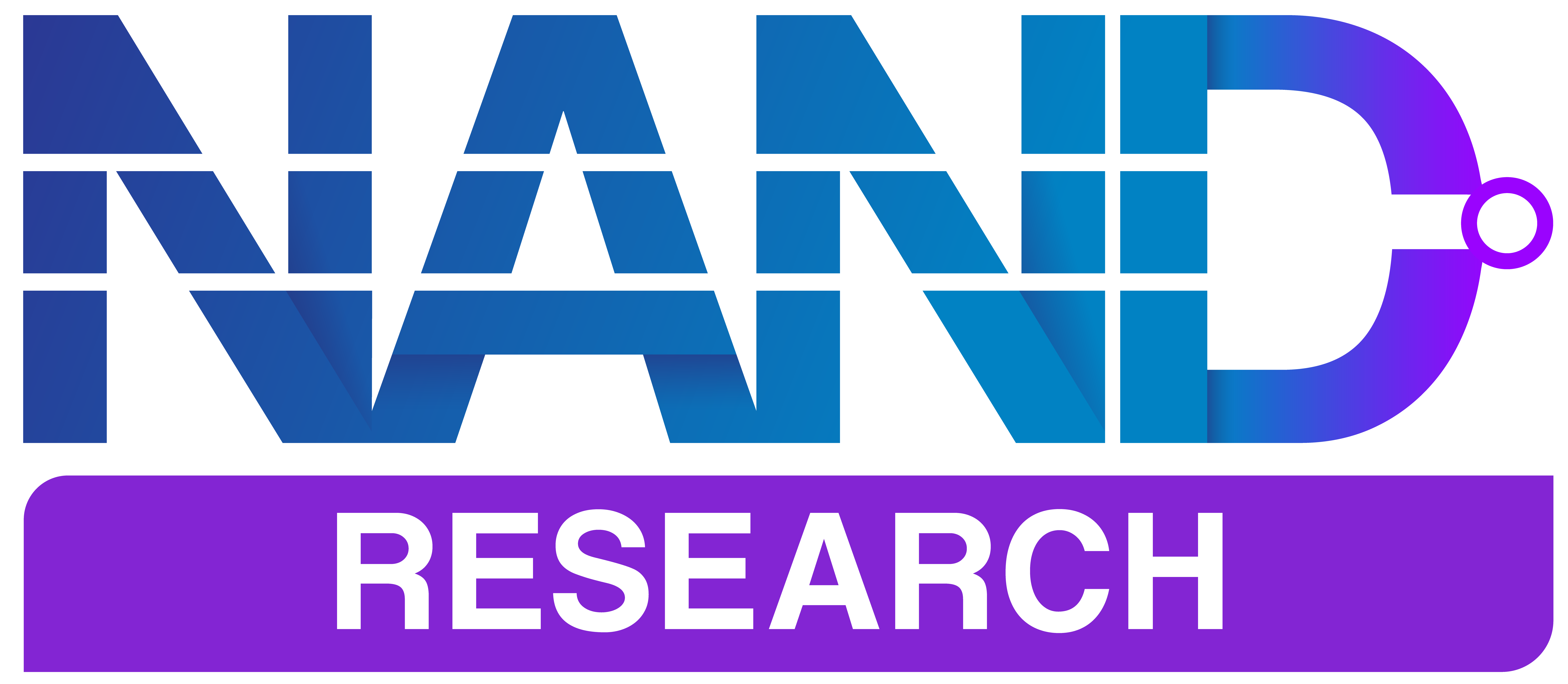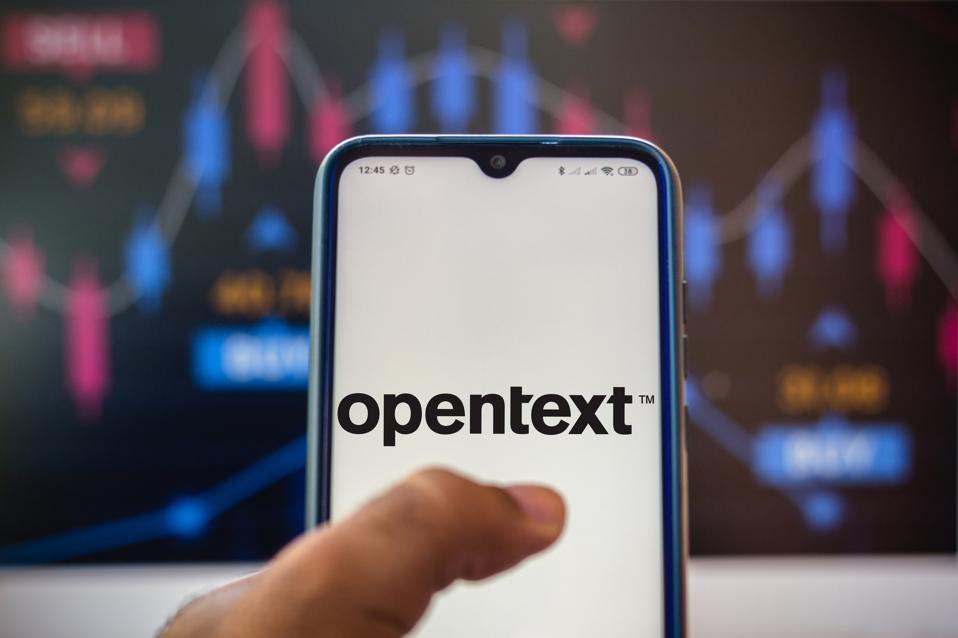OpenText recently launched Titanium X, part of its Cloud Editions (CE) 25.2 release, its most comprehensive AI-native upgrade across all major product clouds. The release introduces new AI agents, expanded automation capabilities, and integrated cloud security enhancements.
Almost no other company has a single platform delivering as many capabilities as does OpenText with its assortment of specialty “clouds.” To make it easier to digest, we’re starting with an overview of the platform-level enhancements that are then followed by each of the clouds within OpenText CE 25.2, keeping our analysis of each contained within those sections.
Let’s get started.
Core Platform Enhancements
OpenText Titanium X in CE 25.2 provides a foundational platform for enterprises transitioning to AI-driven operations. Titanium X introduces enterprise-wide integration of intelligent agents—referred to as Aviators—across OpenText’s product portfolio, enabling automation, observability, and orchestration across hybrid and multi-cloud environments.
This architecture brings AI workloads closer to operational data and business processes, reducing reliance on third-party orchestration tools and increasing alignment between decision-making and real-time context.
Core enhancements include:
- AI-Powered Task Automation: Pre-configured Aviators automate repetitive and manual workflows to improve operational efficiency and reduce time-to-resolution across business functions.
- Contextual Decision Support: Embedded AI agents provide real-time insights within business workflows to enable faster, more informed decisions through tight integration with enterprise data.
- Multi-Platform Integration: Titanium X supports seamless integration across both cloud and on-prem platforms, including:
- Public clouds: Google Cloud, AWS, Azure.
- Enterprise platforms: Microsoft 365, Salesforce, SAP.
- Unified Security and Compliance Controls: The platform consolidates policy enforcement and compliance capabilities at the infrastructure layer that allow organizations to apply consistent controls across distributed environments.
Let’s look at each key technical developments by service category.
Content Cloud
The new release of OpenText Content Cloud embeds generative AI into industry-specific workflows and expands intelligent access to legacy content across enterprise systems.
OpenText Content Management now integrates with Guidewire PolicyCenter and ClaimCenter, enabling insurance stakeholders, including claims adjusters and underwriters, to access documents and correspondence directly within their operational systems.
Key benefits include:
- Real-time access to a centralized source of truth.
- Improved data consistency across Guidewire, Salesforce, Microsoft 365, and SAP platforms.
- AI-powered assistance for summarizing policies, claims, and generating communications within context.
The Content Aviator generative AI assistant has been extended to support summarization, translation, and content retrieval across Core Content Management, Extended ECM, and Documentum CM. Natural language search capabilities streamline the process of locating and interpreting unstructured content, improving end-user efficiency.
OpenText Information Archive now includes support for AI-based summarization and structured data extraction from archived content, improving access to long-term information assets. This is particularly useful for organizations in regulated industries where compliance and historical data availability are critical.
Analysis
OpenText continues to differentiate its Content Cloud with natively integrated GenAI capabilities into its content management system while and aligning capabilities with industry-specific workflows, particularly in sectors such as insurance and life sciences.
The new Guidewire integration is a notable differentiator, enabling OpenText to replace standalone document management and content service solutions that lack embedded AI or vertical alignment.
Unlike general-purpose platforms (e.g., Box, Dropbox), OpenText delivers a combination of AI-assisted automation, compliance-ready architecture (e.g., GxP, FedRAMP, Protected B), and integrated extensibility across ERP, CRM, and productivity platforms.
This makes OpenText Content Cloud a strong fit for organizations prioritizing operational efficiency, secure unstructured data access, and data residency.
Cybersecurity Cloud
The CE 25.2 release of OpenText Cybersecurity Cloud introduces Core Threat Detection and Response, a next-generation, AI-powered detection solution that advances the company’s extended detection and response (Open XDR) strategy.
The new release provides enhancements across behavioral analytics, incident response, and identity governance for hybrid and multi-cloud environments:
Core Threat Detection and Response replaces static signature-based detection with behavioral indicators of compromise (BIOCs) to identify insider threats, credential misuse, and advanced persistent threats.
Rather than replacing existing tools, this solution augments enterprise security investments by integrating natively with platforms such as Microsoft Defender and Entra ID.
AI-Driven Threat Analytics leverages behavioral baselining of users and entities across environments to proactively identify anomalies and reduce false positives for earlier detection of complex threats.
Federated Integration Model offers infrastructure-agnostic deployment, allowing organizations to retain their current SIEM, EDR, and IAM solutions while layering OpenText’s detection and automation capabilities for unified threat visibility.
Analysis
With CE 25.2, OpenText transitions from a provider of discrete security tools to a full-spectrum cybersecurity platform. By emphasizing behavioral analytics and modular integration, OpenText can now address detection and response gaps left by traditional SIEMs and endpoint detection platforms.
Its behavioral-first approach aligns with evolving threat patterns such as low-and-slow intrusions, insider threats, and credential-based attacks, which are often missed by static rule-based systems. As a result, OpenText’s entry into the Open XDR space introduces competitive pressure on vendors such as CrowdStrike, SentinelOne, and Microsoft Security, particularly for enterprises seeking to enhance detection without disrupting existing toolchains.
Additionally, Core Threat Detection and Response complements OpenText’s prior releases (such as Core Identity Foundation and Endpoint Investigator), contributing to a more unified and adaptive security architecture.
This combination supports enterprises with complex regulatory requirements, distributed infrastructure, and the need for consolidated threat visibility across identity, data, and endpoint layers.
Experience Cloud
The CE 25.2 release of OpenText Experience Cloud advances the platform’s total experience strategy through deeper vertical integrations, enhanced compliance capabilities, and expanded GenAI functionality.
These updates enhance OpenText’s capabilities for scalable personalization, real-time communication, and interoperability across regulated, omnichannel environments:
Guidewire ClaimCenter Cloud Integration
OpenText Communications now integrates directly with the Guidewire ecosystem, enabling the automated generation and delivery of personalized insurance communications, including quotes, proposals, and claims updates. The integration ensures:
- Real-time, compliant correspondence across the policyholder lifecycle.
- Embedded access through the Guidewire Marketplace.
- Improved accuracy and operational efficiency in customer-facing insurance workflows.
AI-Driven Personalization and Asset Management
Enhancements to digital asset management incorporate OpenText Knowledge Discovery and RAG to:
- Streamline asset discovery and reuse.
- Improve metadata enrichment and reduce redundant content creation.
- Enforce content governance while enabling large-scale personalization efforts.
Secure, Omnichannel Communication
Continued expansion of messaging capabilities includes support for RCS, WhatsApp, and cloud-based fax solutions (Core Fax and RightFax), allowing organizations to:
- Deliver secure, media-rich messages across preferred communication channels.
- Meet regulatory communication requirements in sectors such as healthcare, finance, and insurance.
Analysis
The updated Experience Cloud brings new capabilities that address both operational efficiency and regulatory compliance in CCM and digital experience delivery.
Its Guidewire integration gives OpenText a strong position in the insurance vertical, where embedded, compliant communications capabilities are increasingly critical. This creates competitive pressure on niche CCM vendors that lack native integrations or AI-powered personalization.
At the same time, AI-enabled DAM enhancements and robust omnichannel support provide marketing and operations teams with the tools needed to scale personalized content delivery while maintaining control over compliance and brand governance.
OpenText’s continued focus on composability and interoperability—in contrast to monolithic digital experience suites from vendors like Adobe and Salesforce—further supports its appeal in regulated industries that require deployment flexibility.
Observability & Service Management Cloud
The latest release of OpenText Observability and Service Management Cloud brings key enhancements to the platform that deepen the integration of automation, AI-driven remediation, and multi-cloud visibility.
This release supports OpenText’s broader strategy to unify ITOPs, ITSM, and security response under a single, AI-native control plane:
Vulnerability Remediation via Tenable and Qualys Integration
OpenText Automation Center now ingests scan data from Tenable and Qualys, allowing:
- Automated correlation of vulnerabilities with patch policies.
- Orchestration of remediation workflows at scale.
- Prioritization of critical threats and reduction of manual patching overhead.
Enhanced AIOps with OpenText Aviator
OpenText Aviator for AIOps delivers:
- Intelligent workflow recommendations based on historical runbooks.
- Embedded knowledge reuse through ticket-based knowledge integration.
- Accelerated resolution of recurring infrastructure and application issues.
Service Management Aviator
A secure, embedded LLM now powers Service Management Aviator, providing:
- Context-aware, conversational support for service desk agents and end users.
- Deployment flexibility across cloud and on-premises environments.
- Improved user experience and reduction in MTTR.
Analysis
With CE 25.2, OpenText strengthens its position in the observability and ITSM markets by integrating remediation, automation, and AI within a unified operational framework — without introducing reliance on third-party orchestration layers. This tightly coupled approach enhances response time and knowledge continuity across infrastructure and security operations.
The integration of Tenable and Qualys provides a closed-loop remediation path from vulnerability detection to patch deployment, while AIOps enhancements automate repetitive triage tasks and support consistent operational workflows.
While ServiceNow and Dynatrace maintain broader market presence, OpenText’s emphasis on domain-specific AI, regulatory compliance, and deployment flexibility makes it a competitive alternative, particularly in regulated, hybrid, and multi-cloud enterprise environments where customization and data control are key.
OpenText CE 25.2 advances its unified observability and service management vision with a platform capable of intelligent remediation, rapid threat response, and scalable support. By embedding automation and AI at the control plane level, OpenText addresses the increasing complexity of IT and security operations while reducing friction between teams and tools. This is a nice update.
DevOps Cloud
The latest OpenText DevOps Cloud introduces new AI-driven capabilities to enhance software delivery through intelligent test automation and scalable performance diagnostics:
DevOps Aviator for Java
Expanded generative AI capabilities now support:
- Automatic generation of unit tests based on feature specifications.
- Summarization of features and defect histories, improving context during reviews.
- Context-aware code review suggestions, reducing manual effort and accelerating development workflows.
Core Performance Engineering Analysis
The release integrates raw data ingestion and high-speed cloud-based processing for advanced diagnostics, offering:
- Near real-time root cause analysis for performance issues.
- Scalable diagnostics across cloud-native and hybrid environments.
- Reduced reliance on manual data interpretation, improving triage speed and lowering resolution costs.
Analysis
OpenText rightly positions DevOps Cloud as a full-stack, AI-native platform for enterprise software delivery. The latest release builds on this positioning by extending generative AI into testing and performance workflows to eliminate bottlenecks and increase delivery velocity.
Competitively, OpenText’s integrated approach challenges DevOps solutions from GitLab, Atlassian, and Microsoft Azure DevOps, particularly in regulated or large-scale enterprise environments.
The ability to embed performance diagnostics and AI-driven test automation within the pipeline provides differentiation in use cases where risk mitigation, regulatory alignment, and continuous improvement are critical.
Analytics Cloud
OpenText Analytics Cloud latest release combines generative AI, intelligent automation, cloud-native scalability, and enhanced data governance.
This release builds on OpenText’s strategy to reduce the complexity of data-to-decision workflows while addressing modern enterprise requirements for performance, security, and interoperability.
- Kubernetes Auto-Scaler for Vertica (Analytics Database): Dynamically scales compute resources based on CPU and memory thresholds, optimizing performance for variable workloads while improving cost-efficiency in cloud and hybrid environments.
- Enhanced Data Resilience and Continuity: In-database backup capabilities now support cross-location and cloud-based disaster recovery, improving uptime and supporting high-availability analytics use cases.
- REST API Access to Iceberg Metastore: Adds programmatic access to large-scale datasets stored in Iceberg tables, supporting custom pipeline orchestration and external integration across modern data lakehouse architectures.
- Modern UI and Self-Service Reporting: A redesigned user interface improves navigation and usability for technical and non-technical users. New drag-and-drop report building tools accelerate the creation of dashboards and insights across both structured and unstructured data sources.
- Generative AI via OpenText Intelligence Aviator:
- Enables natural language querying for conversational data exploration.
- Provides REST API-based embedding, allowing developers to integrate AI-powered analytics into external applications and business workflows.
- CIDR-based network access controls strengthen perimeter security and reduce unauthorized access risks. These enhancements complement existing encryption and tokenization capabilities offered through OpenText Voltage+.
Analysis
OpenText advances Analytics Cloud into a composable, AI-augmented platform that unifies pipeline orchestration, decision intelligence, and data protection within a single architecture. By tightly integrating Generative AI, REST APIs, and automated scaling, the platform addresses growing enterprise needs for agility, insight accessibility, and security.
Compared to analytics competitors such as Snowflake, Databricks, and Google BigQuery, OpenText differentiates through its cross-domain integration with content, security, and compliance services. This makes the platform particularly well-suited for enterprises managing legacy systems, regulated data environments, or complex hybrid workloads.
Final Thoughts
Titanium X provides the architectural foundation for OpenText’s AI-native strategy. The platform’s extensibility, unified security model, and alignment with both cloud and on-prem infrastructure allow OpenText to support organizations seeking to modernize incrementally, without sacrificing control, compliance, or performance.
Unlike many enterprise AI solutions that function as bolt-on tools, OpenText embeds AI agents (Aviators) directly within operational systems. This approach ensures:
- Native integration with business-critical workflows.
- Lower complexity in deployment and governance.
- Consistent access to up-to-dat;e organizational data for decision support.
Titanium X supports selective upgrades across functional areas — such as Content Cloud, Cybersecurity Cloud, DevOps Cloud, and Observability & Service Management Cloud — that allow organizations to modernize incrementally without disrupting existing IT ecosystems.
Overall, OpenText enables enterprises to enhance automation, improve security posture, and meet evolving compliance and sustainability requirements. The platform’s architectural flexibility and governance-aligned design make it a strong choice for organizations seeking to modernize without introducing operational complexity or vendor sprawl.
Competitive Outlook & Advice to IT Buyers
These sections are only available to NAND Research clients. Please reach out to [email protected] to learn more.





